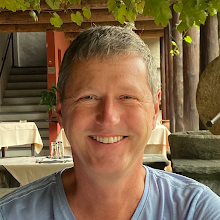
Ian Skerret started the day with a quick introduction followed by Joe Wood of Credit Suisse who talked about how modeling is rapidly becoming a central aspect of Credit Suisse's information technology infrastructure. They're very focused on industry standards to help facilitate integration across organizations. Following those quick introductions, I did my stupid modeling talk.
After the morning break, Richard Wood of Credit Suisse presented a case study on model transformation. They're using oAW and EMF. He talked about Gobal Services as Enterprise Java Beans for which service interface definitions were specified as UML class models. It was a quick and dirty solution with the drawback that the UML API was complex to use and hence the templates were difficult to maintain. Using a specialized model to express web services helped simplify the transformation process of producing WSDLs and XSDs. In other projects they used profiled UML to describe the different design layers of a large project, i.e., the presentation layer and the business data layer, which they mapped onto a specialized DSL and from that generated the parts of the application. He also talked about generating a profiled UML instance from a model and talked about some of the lessons learned. The requirements for the model that are needed for generating is often different from the original high level model, so using transformation to produce the more specialized form can help simplify the design. He suggests to avoid generating directly from UML because it's too complex and that complexity obscures the logic of the templates to make them unreadable and unmaintainable. He feels that static content in templates needs to be independently maintained. He also advises to reuse existing technology whenever possible, e.g, the oAW XMLWriter. One of the questions afterward was about why UML was being used at all; the primary reason given was that UML is simply a standard requirement for which there is existing experience and tools.
After lunch, Bjorn Freeman-Benson, Miles Daffin of Morgan Stanely, and I did our b3 talk. It went pretty well I think. The b3 project completed its creation review just last week, so we're off to the races! Our talk was followed by Eike's CDO talk where he explained many of the same things I've seen at the Munich code camp and at ESE, so it's starting to sound simple and familiar.
Moritz's talk about combining graphical and textual views followed the final break. He focused on some of the qualities of good textual notations, e.g., readability and writability, as well as the tooling aspects that further facilitate these aspects, e.g., syntax highlighting and content assist. Then he compared different aspects of textual and graphical notations, e.g., text tends to be presented in its entirety whereas graphics tends to hide much of the model in properties not directly visible.
The day finished with a closing panel where the panel asked the audience questions to stimulate more two-way interaction. All in all, it was a very fun day. One of the ladies I chatted with remarked how great it was to be able to attend a free mini-conference like this. "Usually something like this costs a lot of many," she remarked. Soon it was time to say goodbye to the bright lights of New York.

The Toronto modeling day was fun as well. It follow much the same format and included mostly the same content. IBM's facilities were very nice, but they asked us not to use cameras. It was especially nice to see some familiar faces. I did my stupid modeling talk yet again; people always seem to like it so that's rather gratifying. My build talk was after the break, so basically I talked the whole morning and was very tired after that. Following lunch I attended the MDE talk as well as Mile's AMP talk. Both were very interesting.
I think the Toronto day went even better than the New York; folks seemed more inclined to interact with each other. That same evening there was a demo camp as well, so we had even more opportunities to chat and mingle. If I wasn't so darned tired, I'd have taken a few pictures. With all the excitement behind me, Frank and I were able to focus on setting up this year's festival of lights.

We refuse to be outdone by our neighbors, not that we're competitive or anything.





2 comments:
you don't really believe in saving electricity, right?
They're LED lights invented by Al Gore. They actually absorb CO2 from the atmosphere!
Post a Comment